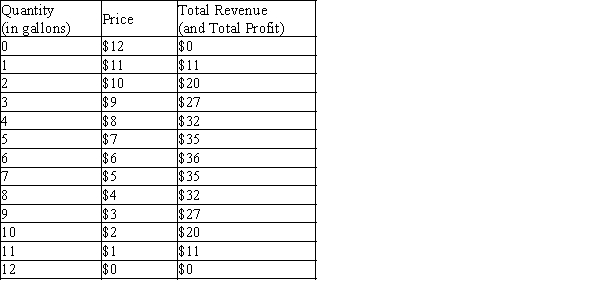Table 17-2
Imagine a small town in which only two residents, Abby and Brad, own wells that produce safe drinking water. Each week Abby and Brad work together to decide how many gallons of water to pump. They bring water to town and sell it at whatever price the market will bear. To keep things simple, suppose that Abby and Brad can pump as much water as they want without cost so that the marginal cost is zero. The weekly town demand schedule and total revenue schedule for water is shown in the table below: 
-Refer to Table 17-2. Suppose that Abby and Brad work together to operate as a profit-maximizing monopolist. How many gallons of water will be produced and sold?
Definitions:
Fixed Costs
Expenses that do not change with the level of production or business activity within a certain range or period.
Short-Run Marginal Cost Curve
A graph that shows the cost of producing one more unit of a good or service in the short term, when some factors of production are fixed.
Optimal Level
The most efficient, effective, or desirable point or degree in a process, situation, or system.
Leases
Legal agreements that allow for the use of property or equipment for a specified time in exchange for payment.
Q62: An oligopoly would tend to restrict output
Q86: In the prisoners' dilemma game, confessing is
Q246: Refer to Figure 16-4. What price will
Q347: Refer to Table 17-6. Suppose the town
Q348: A consultant interviews the hiring manager of
Q408: Assume that two firms in an oligopoly
Q440: Describe the difference between the purchase price
Q445: Refer to Scenario 18-2. If the price
Q483: Defenders of advertising argue that it is
Q584: In the long run, monopolistically competitive firms